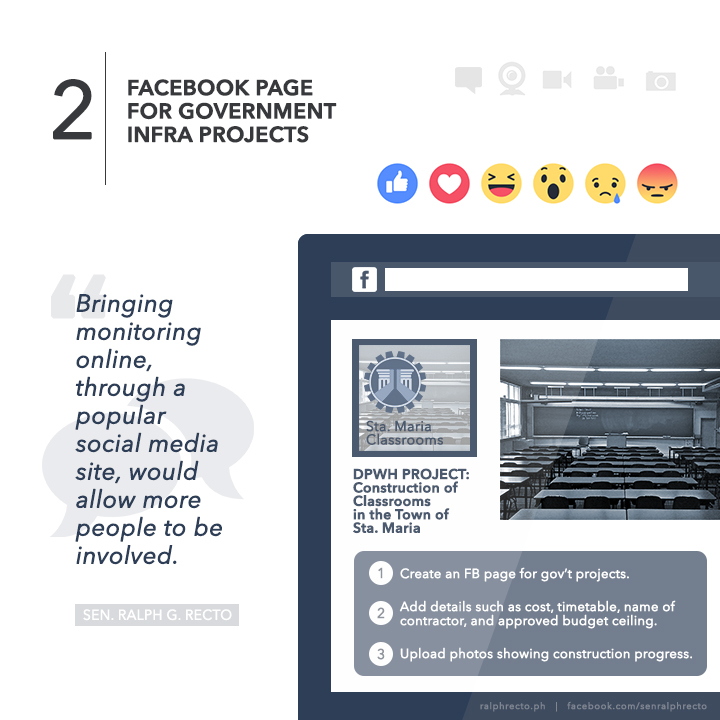Recto: Livestream major infra projects, feed footage to Palace for Digong’s viewing
If CCTVs are now being trained on government office workers, work on critical government infrastructure can also be livestreamed.
Senate Minority Leader Ralph Recto said one way to speed up the completion of traffic jam-causing road constructions is to install a camera which would allow Department of Public Works and Highways (DPWH) officials and the public to monitor progress, or the lack of it, real-time.
For “big-ticket flagship” projects, Recto said footage of jobsite cameras can be fed to Malacañang, where President Duterte can see it. He said Duterte can benefit from having a war room solely dedicated to monitoring infrastructure projects.
Noting that “there’s a Big Brother watching minimum wage janitors in many offices today like the Bureau of Customs,” Recto said such a setup could be applied to projects “that cost billions in taxpayer’s money.”
Recto said rush jobs like the weekend repair of critical stretches of major urban roads can benefit from this kind of “benevolent surveillance.”
If that kind of “remote monitoring” is being used by owners of houses being built, many of whom are abroad, then the same should be done on major infrastructure projects, the senator said.
Recto said if a construction site is already captured by existing road cameras or from one mounted on a private building, “then we can ask the one controlling it to share the footage.”
“Kung MMDA (Metropolitan Manila Development Authority) camera at sapul ang isang road reblocking, baka pwede i-share online,” Recto said.
If livestreaming cannot be done for technical reasons, Recto said both government agencies funding infrastructure projects and private contractors should create a platform “where time-lapse still photos can be viewed by the public.”
“Gusto natin ang proyektong permanenteng nag-se-selfie,” Recto said.
Recto said livestreaming is one IT-based “helper” that enables transparency in large-scale public works undertaking.
Another, he said, is for government to open an account or page for government infrastructure projects in the popular social networking site Facebook (FB) so that people can track their progress and monitor their implementation.
“If there are proposed classrooms in a town, then the field office of the DPWH can open an ‘FB Page on the Construction of Classrooms in the Town of Santa Maria,’ adding there details such as the cost, timetable, name of contractor, and approved budget ceiling,” he said.
And with most mobile phones nowadays functioning as cameras too, it will be easy to upload pictures showing construction progress on the FB group account.
“If there’s a post saying it is proceeding as scheduled, then you can ‘like’ it. If there’s a photo showing no work has been done, then you can share it. Either way, you can comment to give your praise or displeasure. Pwede ka sumama sa ‘unlikers’,” Recto explained.
He said bringing monitoring online, through a popular social media site, would allow more people to be involved, “unlike the traditional methods of divulging project details.”
“Kung yung usual karatula lang yan o tarpaulin sa project site mismo, yung dumadaan lang ang nakakakita. Paano kung isang irrigation reservoir sa bundok na unggoy lang ang nakatira? Mayroon bang makakabasa ng billboard doon?” he asked.
RELATED ARTICLES:
-
06 NOV 2015: Post Facebook photos of P93 B worth of Yolanda projects
-
03 AUG 2015: Gov’t urged to open Facebook account for every gov’t project



